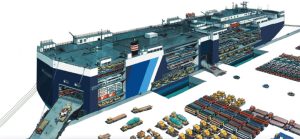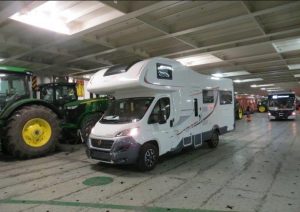 by Jefferson Clay
by Jefferson Clay
Cargo Services, director of global services
This article is based on a presentation at the
RVIA November 2017 trade show given by Cargo Services.
In August, the RV market report (a survey of some 30 branded RV manufacturing companies) showed the best August on record since 2003. The past few months show 2017 has continued this momentum. Shipments are up. People are buying. The tide has turned from the recession years. RV’s are flying (or should we say rolling) off the lots. So what’s next?
We all know when customers are buying and cash is good, people want to do business with you. That’s why now is the time for the RV business leaders to consider expanding by actively pursue foreign markets. That means understanding foreign market options, demand overseas and logistics options to be able to deliver.
Overseas consumers in Europe and Asia want American made products. Consider this: Combined 2017 YTD, the Asian and European markets are .10% of the total RV sales. Yet there’s huge demand.
According to an International Trade Administration 2016 Top Markets report, the greatest growth for U.S. exports is expected in emerging markets, particularly China and Korea. Chinese consumers purchased an estimated 21,000 RVs by the end of 2014. This number could reach 300,000 by 2020 thanks to the growing economy and rising middle class.
According to a CNBC story in August, Europeans are buying “leisure vehicles” again thanks to economic recovery from the euro zone debt crisis of 2013 and the financial crash of 2008. The latest numbers from the European Caravan Federation show the 2016 European RV market registered its highest sales in seven years. A total of 170,064 leisure vehicles were newly registered in Europe in 2016, according to the ECF, an increase of more than 10 percent.
In the first quarter of this year, Germany, the largest market for leisure vehicles, saw a 6 percent year-on-year rise in sales. Great Britain is considered a top-five demand RV market. The country showed a 6.6 percent rise in sales based on recent data. This comes as car sales in both countries remain weak, with Germany seeing just a 2 percent rise in the first half of 2017, and the U.K. seeing a contraction.
Turkey is also in on the RV trend. There are 109 campgrounds in country. Fifty-six of these are registered with the Turkish Camps and Caravan Association. In 2010, acco
Don’t let logistics be a barrier
Some say, this is a great idea to look overseas, but they admit they don’t know how to manage the logistics. There are transportation modes that work for the RV industry and overseas consumers. Large scale cargo requires the right resources. Some units fit in a container, while some must be driven/trailered to a port, loaded on a flat-rack or driven right onto a vessel. This is called roll on/roll off. See examples to the right.
Moving cargo through seaports throughout the world means a certain level experience and expertise. Freight forwarding companies specialize in importing and exporting globally. Teams know how to move shipments for clients, work with governments and ensure client peace of mind.
While business is great today, there’s always room for growth. RVs are in demand overseas. Learn more and deliver to this demand.

